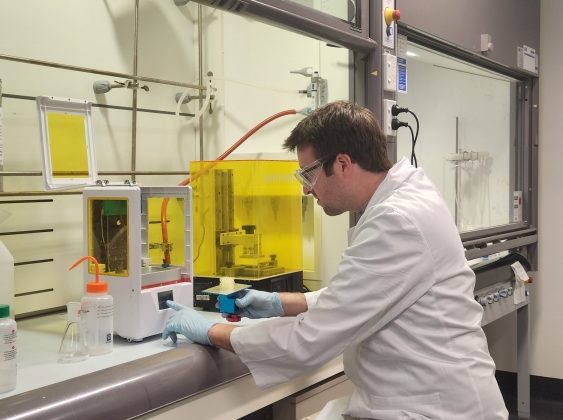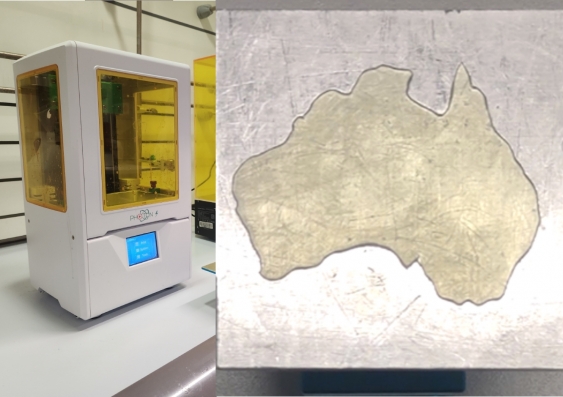
A team of engineers at the University of New South Wales has developed a process to print solid-state polymer electrolytes into any shape desired for use in energy storage. According to the research team, the 3D-printing process of such material could be particularly useful in the development of medical devices that would benefit from small, intricately designed energy storage.
Solid-state electrolytes are a key component in solid-state batteries. Traditionally, however, they’ve suffered from poor performance due to low ionic conductivities or poor mechanical properties. In contrast, the UNSW team’s 3D-printed solid polymer electrolyte (SPE) offers both high conductivity and robust strength, which means that it can potentially be used as the actual structure of a device, creating a range of conceivable design opportunities, particularly for future medical products.
‘Nobody has 3D-printed solid polymer electrolytes before,’ said Kenny Lee, from UNSW’s School of Chemical Engineering. ‘Traditionally, they have been made using a mould, but previous processes did not offer the ability to control the strength of the material, or to form it into complex shapes.
‘With existing solid-state electrolytes, when you increase the mechanical strength of the material, you sacrifice a lot of the conductivity,’ he continued. ‘If you want higher conductivity, the material is much less robust. What we have achieved is a simultaneous combination of both, which can be 3D-printed into sophisticated geometries.
‘This polymer electrolyte has the potential to be a load-bearing energy storage material,’ he concluded. ‘Because of its strength, it could be used as the actual structure of small electronics, or in aerospace applications, or in small personal medical devices, given our 3D printing process can be very intricate and precise. We can create really tiny structures with the kind of systems we’re using. So it has fantastic application in nanotechnology and anywhere you need to design energy storage on a micro-scale level.’
Although the SPE developed by the UNSW team is regarded as a high-performance material, the researchers say that it can be manufactured using inexpensive and commercially available 3D printers, rather than sophisticated engineering equipment. It’s composed of nano-scale ion-conducting channels embedded in a rigid crosslinked polymer matrix and is produced using a process known as polymerisation-induced microphase separation.
To showcase the material’s versatility, the researchers 3D-printed an intricate map of Australia that was then tested as an energy storage device.

‘One of the other benefits of this SPE in energy storage devices is the fact it increases the cycling stability – that is the number of charging and discharging cycles until its capacity is reduced to a certain amount,’ said Nathaniel Corrigan (pictured above). ‘In our paper, we show that this material is very stable and has the ability to charge and discharge over thousands of cycles. After 3,000 cycles, there was only roughly a ten per cent drop.’
According to the researchers, 3D printing also reduces wastage compared to other traditional forms of manufacturing and reduces costs since the same machine can be used to produce a variety of differently shaped materials. In future, they say product designers could utilise their SPE to create items with a much higher energy storage density.
‘Imagine an ear-pod predominantly made out of this material, which is also acting as the battery. The storage density will be much higher and the power would therefore last longer,’ said Professor Cyrille Boyer. ‘We really hope to be able to push forward in terms of commercialisation because we’ve created some really incredible materials and processes.’
The research has been published in Advanced Materials.



